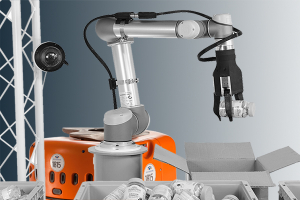5 Key Factors to Consider to Successfully Deploy Robotic Piece-Picking
We project robots will pick 100s of millions of e-commerce items by the end of 2020. Whether it’s because companies find it difficult to hire and retain sufficient warehouse resources or need to improve the cost-efficiency of warehouse operations, robotic piece-picking implementations continue to trend rapidly upward.
A key reason for this trend is that robotics plays a key role in improving the accuracy and timeliness of moving products into, through, and out of warehouses—which is critical for forging and maintaining a strong brand reputation with retail end consumers. Robotics comes into play at a number of warehouse transition points, when items are selected from storage, sorted after moving downstream on conveyors, and finally at order pack-out. In the competitive world of e-commerce, this new form of warehouse automation is a strategic weapon: helping forward-thinking retailers fulfill customer orders “right now” through the convenience of online buying, whether delivery is to the home or for pickup at a store.
The choice to use robots to piece-pick items in fulfillment operations can give your company the ability to reduce warehouse costs and increase order accuracy. Robotic systems also reduce manual touchpoints in warehouses, which improves throughput predictability.
In addition, with individual associates managing small fleets of autonomous robots, robotics technology can increase labor productivity by more than 400 percent. This in turn frees up personnel to tackle more complex tasks elsewhere in the order-fulfillment process.
But the transition from an all-manual, item-handling warehouse to a mix of robotic and manual processes does not happen overnight. Transformations require advance planning and organizational alignment to succeed, depending on the scale of robotic piece-picking systems to be deployed.
This white paper presents five key factors to consider as part of a program to deploy robotic piece-picking. While the technology is approaching plug-and-play status, it’s important to think about how you will operationalize and use robots to maximize their benefits—both from the perspective of how they will interact with your team as well as how they will integrate with your virtual warehouse execution systems.
What’s Related




Favorites





